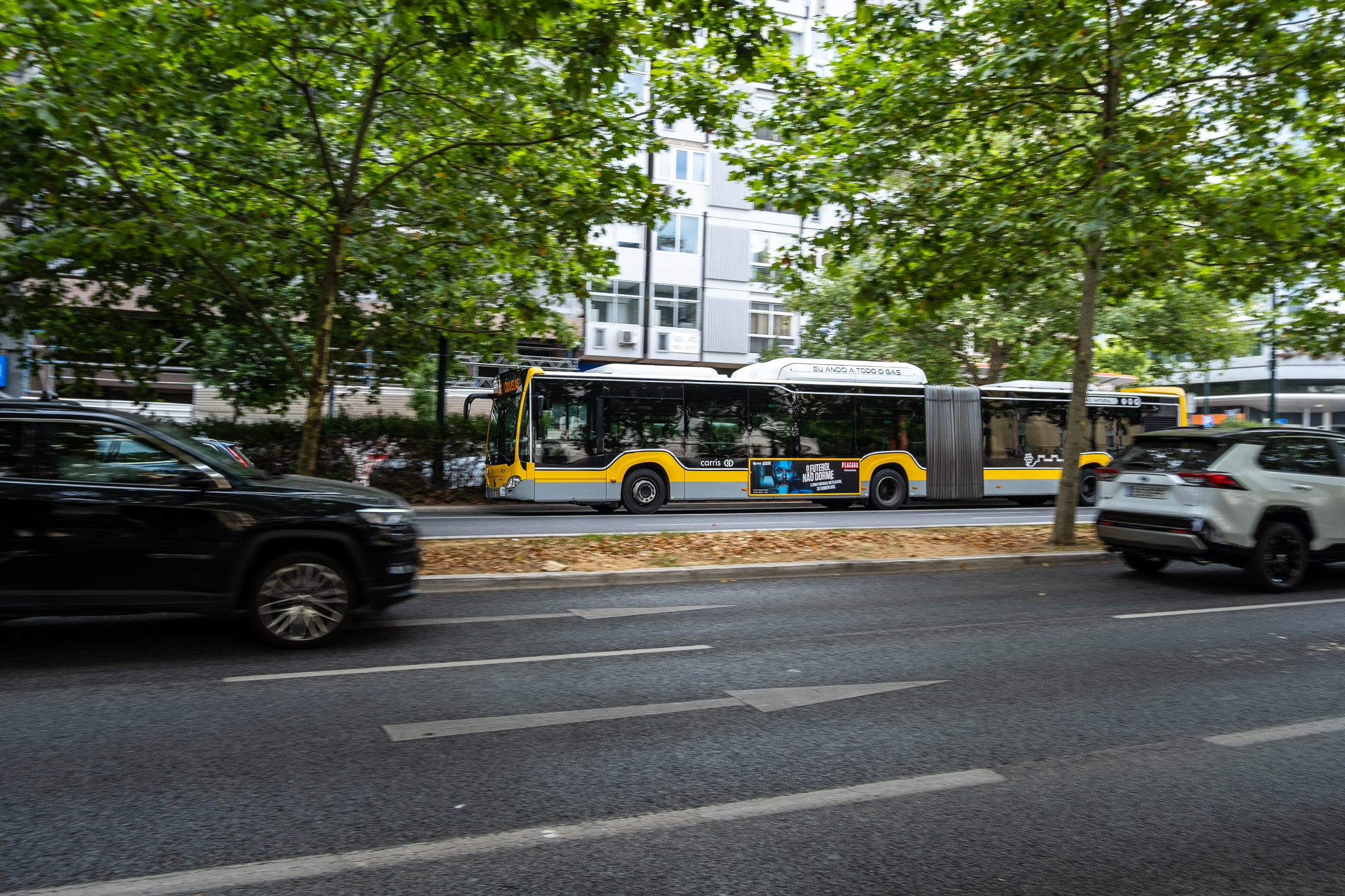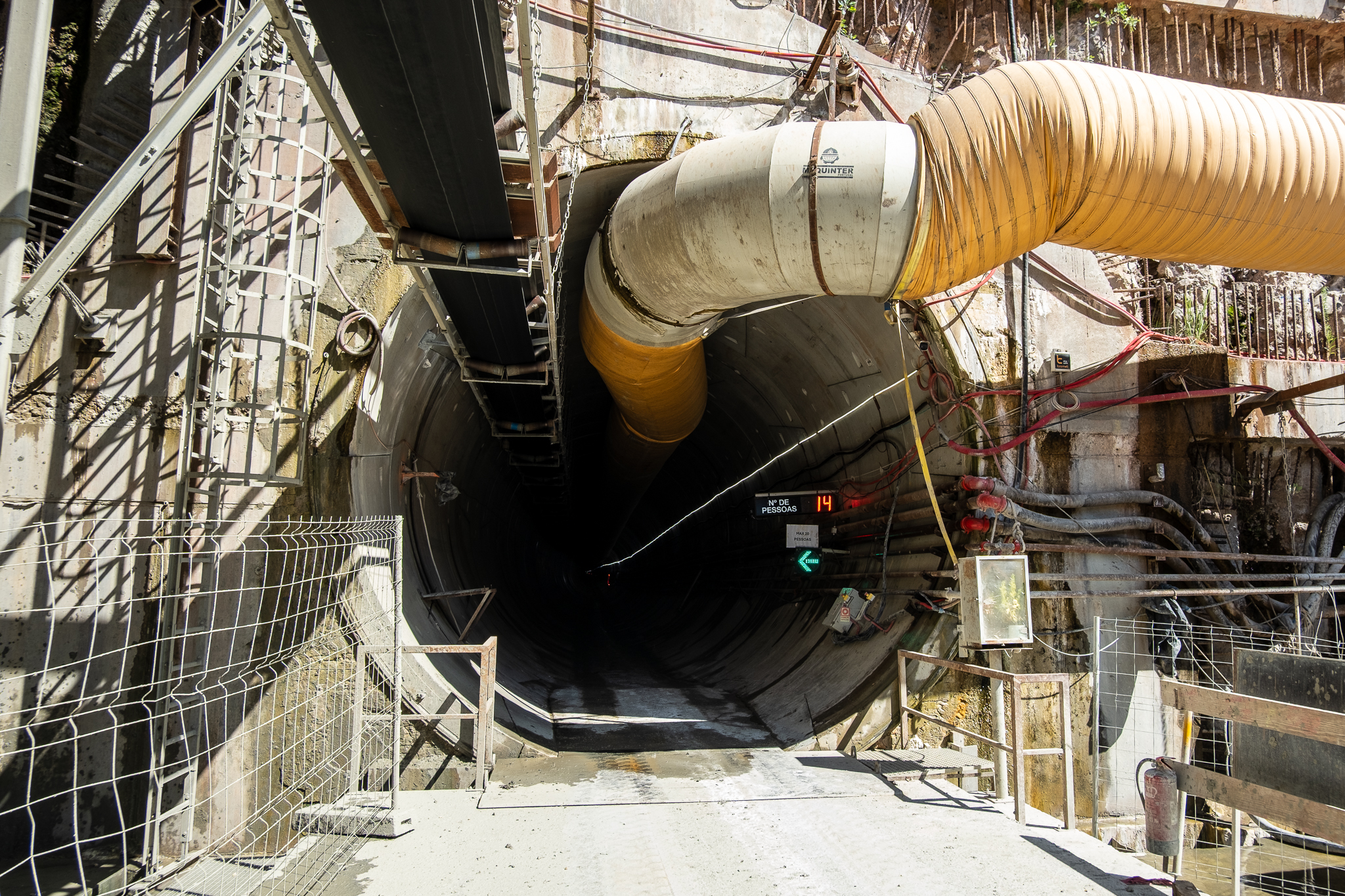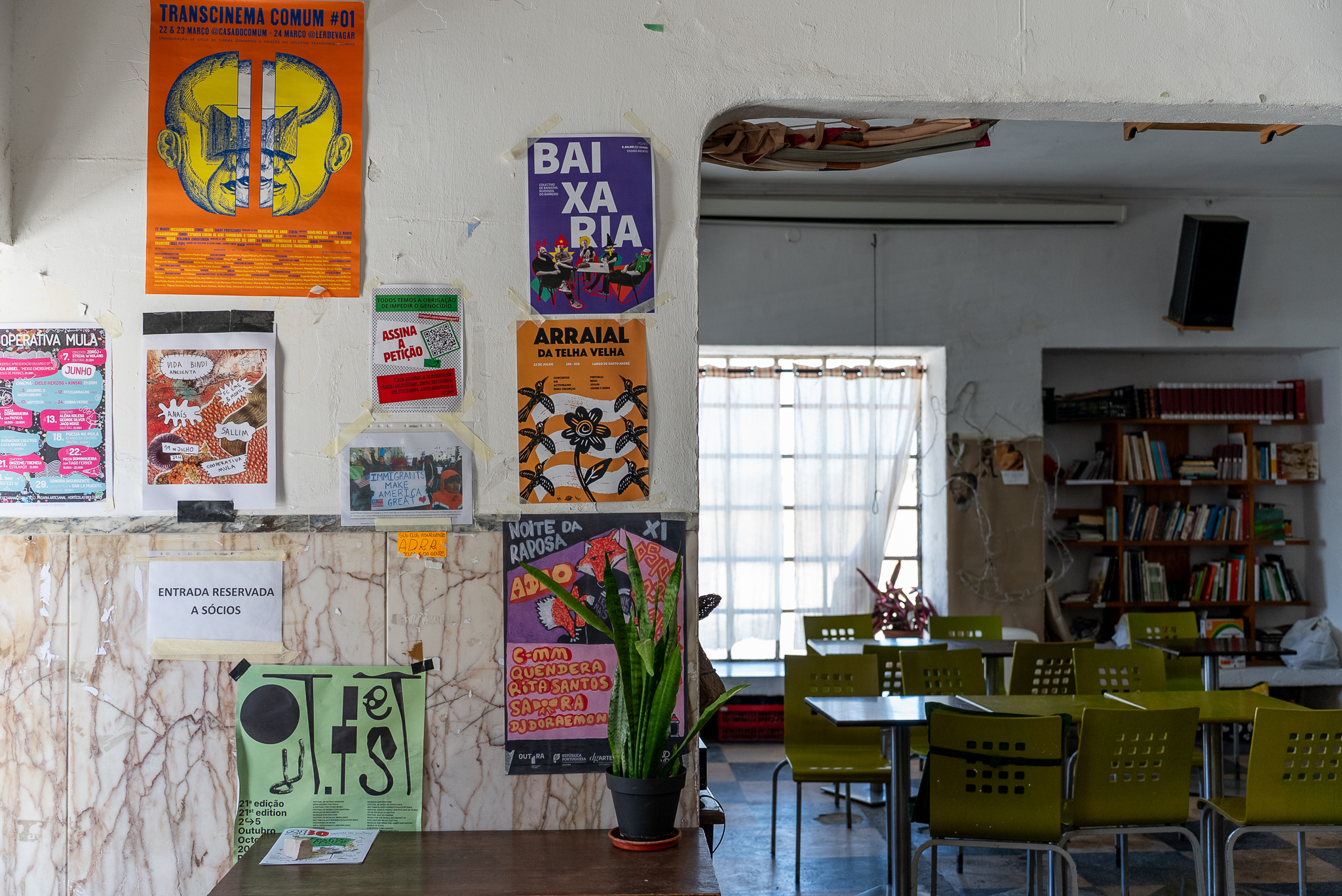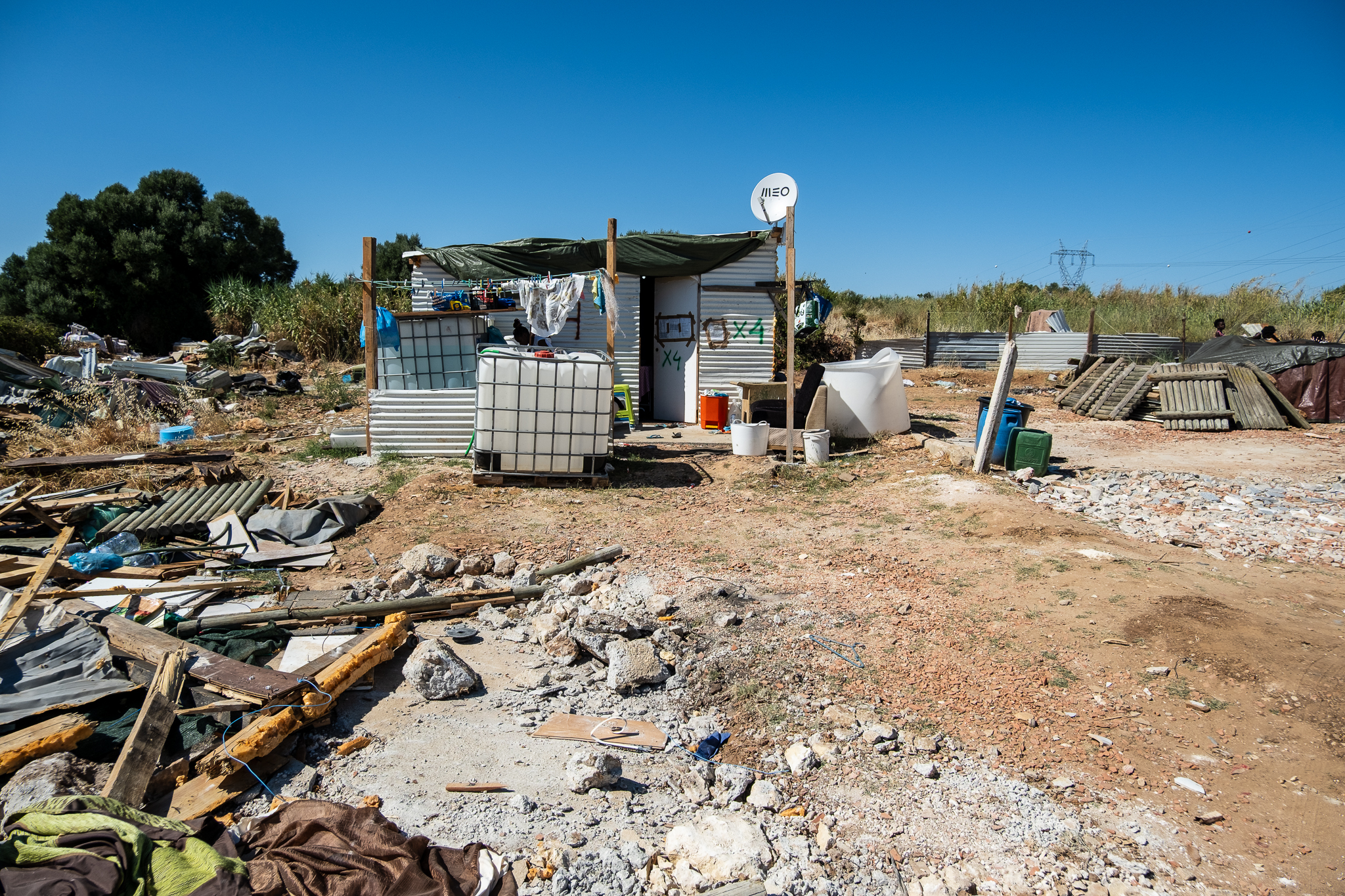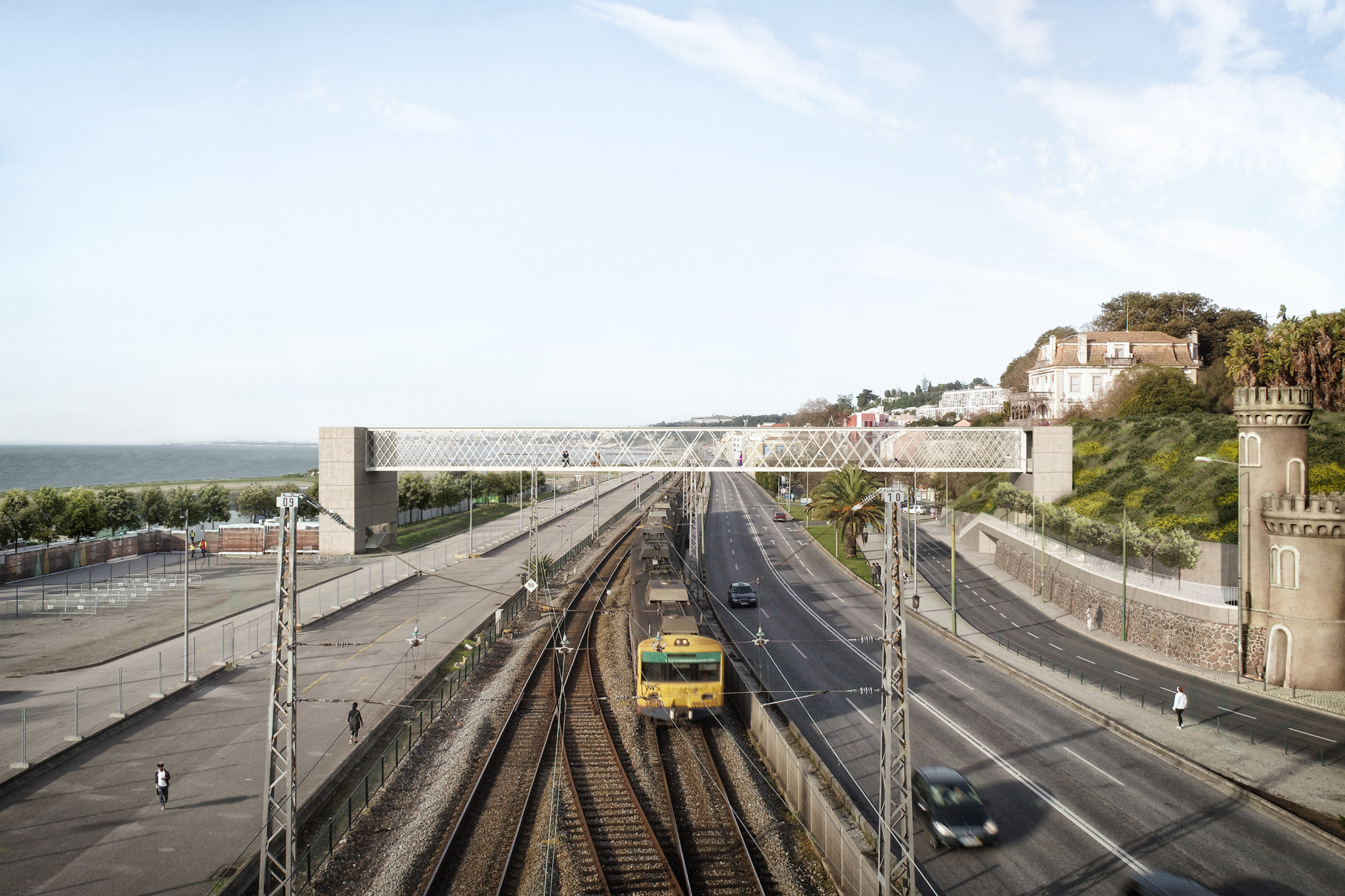The IC20 connects Almada to the Costa da Caparica and will be widened on the stretch between the Centro Sul traffic circle and the Casas Velhas junction, next to the FCT. "Portugal is probably the only developed European country that continues to invest in reinforcing road infrastructure to solve problems of accessibility and urban mobility," criticizes Fernando Nunes da Silva.

The news broke suddenly: the IC20, the main road in the municipality of Almada, is to be widened to four lanes in about half of its length.between the center of Almada and the Casas Velhas/Universidade junction. This widening is justified by a contractual obligation on the part of Auto-Estradas do Baixo Tejo, the sub-concessionaire that manages this public infrastructure, as traffic has reached more than 60,000 vehicles per day.
However, if widening a highway like the IC20 increases its capacity, allowing more cars to circulate at the same time, it doesn't solve the problem of traffic and congestion: the fact is that when you have a section with excess demand and you build a new section with the capacity to absorb that excess, demand rises again and exhausts the capacity of the new section. It's a little fish with a tail in its mouth.
What is the IC20?
We'll go into this in more detail in a moment. First, it's important to understand the context of the IC20 and its extension. The IC20 is owned by Infraestruturas de Portugal (IP) but is managed by a private company, through a sub-concession - in this case, Auto-Estradas do Baixo Tejo (AEBT). This model is known as a Public-Private Partnership (PPP).
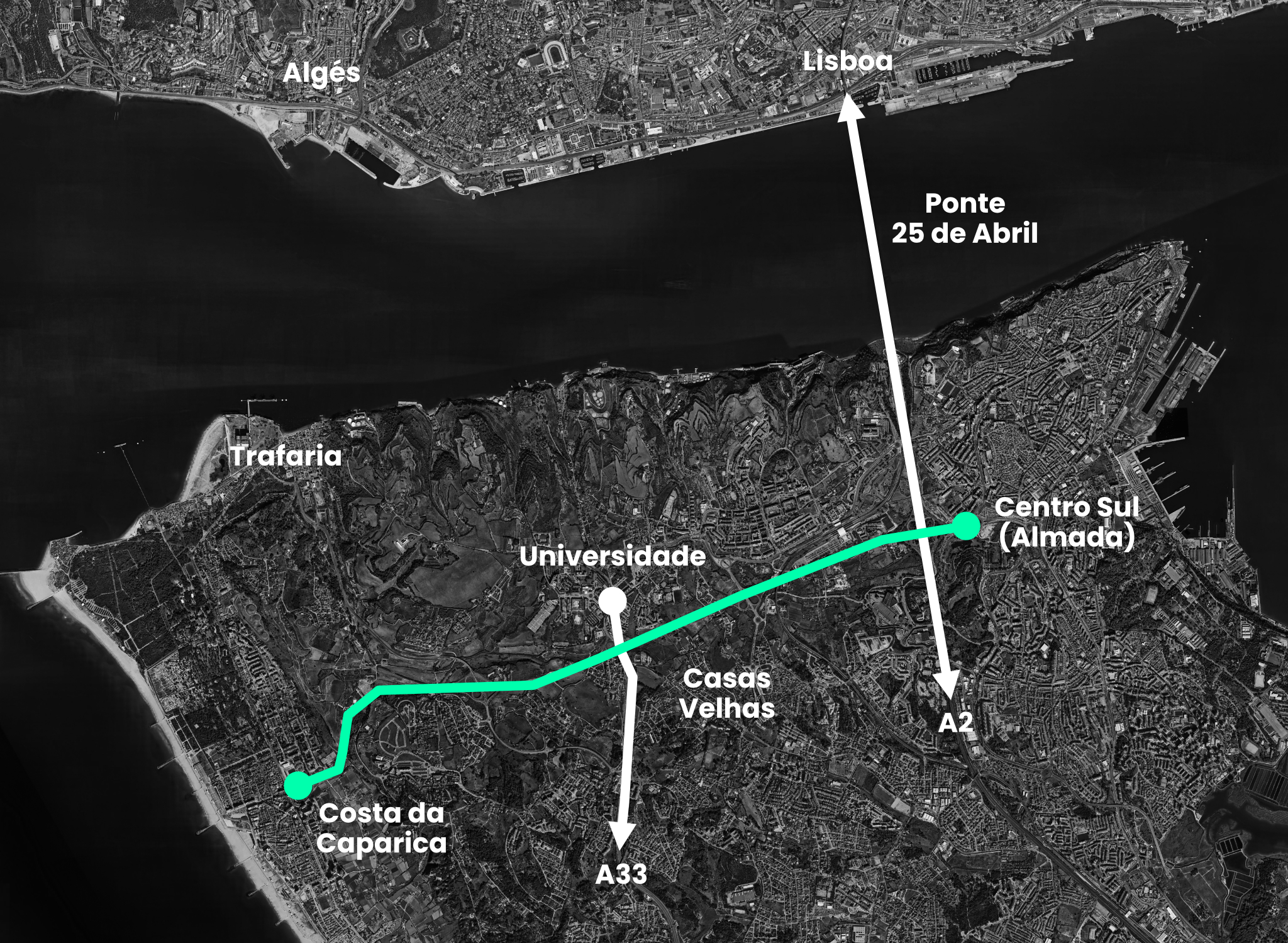
Despite having a highway profile - and even having a reserved numbering in case it becomes one (A38) - the IC20 remains a Complementary Itinerary (IC), even though it plays a central role in mobility in the municipality of Almada (and beyond) and is sometimes confused with an urban avenue.. Without tolls, the IC20 connects with the A2, which links Lisbon to Setúbal in the metropolitan area, and also with the A33, which runs along the entire South Bank between Almada and Montijo. Looking at the municipality of Almada, the IC20 starts in the city center of Almada and ends in the city center of Costa da Caparica - passing by the Garcia da Horta Hospital and the Faculty of Science and Technology (FCT) of the University of Lisbon. It was once planned to extend it between Costa and Fonte da Telha to meet summer traffic flows, but this idea was canceled in 2011 by the government, avoiding the destruction of part of the Medos National Forest and the Lands of the Coast.
Enlargement
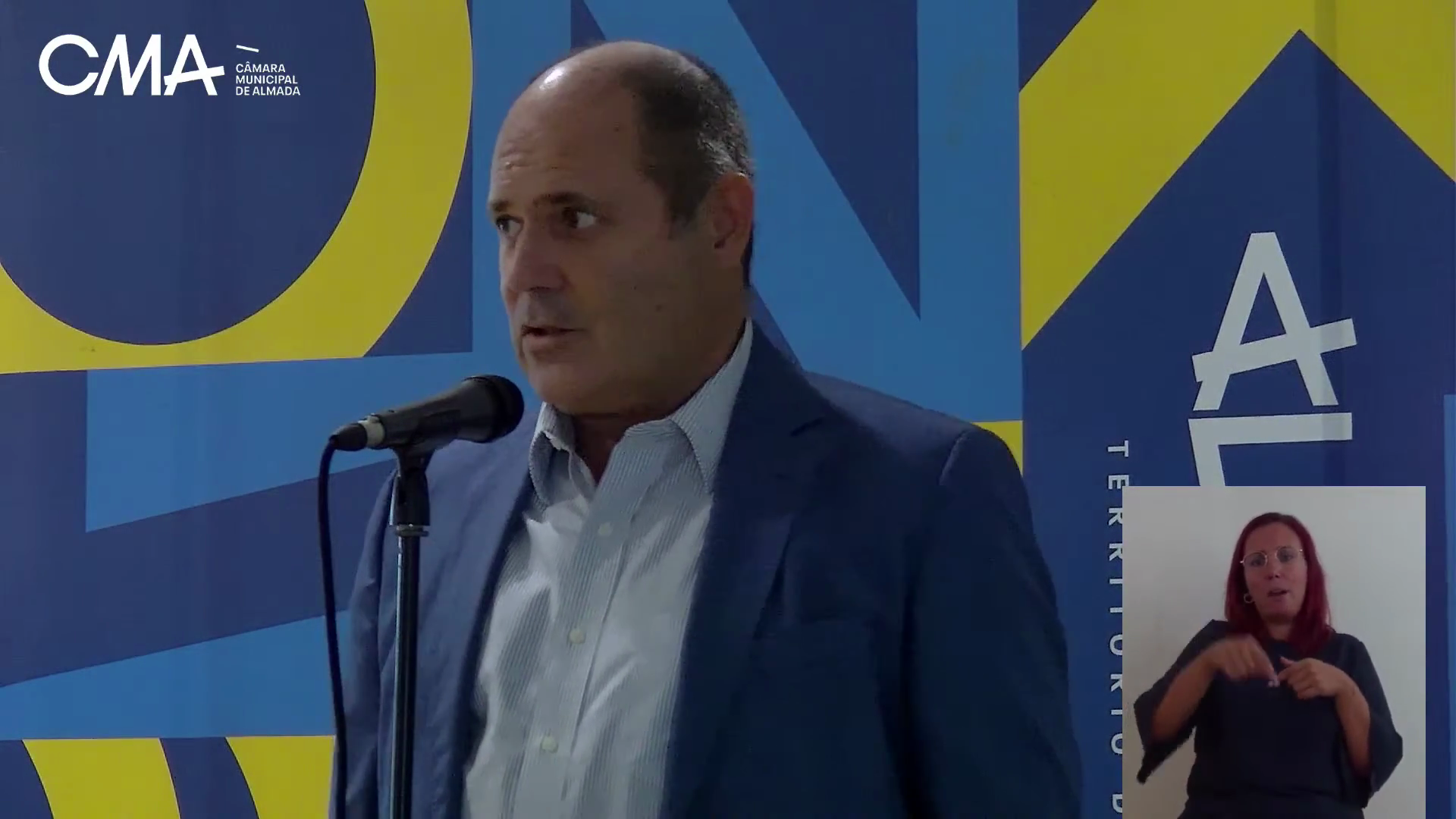
It was at a meeting of the Almada City Council Executive on September 18, in the middle of European Mobility Week, with online transmission, that the population learned about the widening of the IC20. This is despite the fact that the project has already passed by the Diário da República at the end of 2022. João Portela, AEBT's representative, was invited to be present to present the work, which will formally begin on October 2nd with the assembly of the shipyards. He presented it as an inevitability. "It's an obligation of our contract, which states that when the roads reach a certain traffic flow limit, they have to be widened"he explained. This is the case of the stretch of the IC20 between the south center of Almada/access to the A2 and the so-called Casas Velhas junction, in Caparica, near FCT. On this stretch of about four kilometers, where there are currently three lanes in each direction, there is a annual average daily traffic of more than 60,000 vehicles. "Given that that stretch of road has more than 60,000 vehicles a day, we have to add a fourth lane" he said. "We have to fulfill the contract."
João Portela simply passed on information about the work. He pointed out that, although the construction site was to be set up on October 2nd, the work was scheduled to start on October 3rd. "end of October or beginning of November"Completion is scheduled for May 2025. Eight phases of work are scheduled. The widening will mean that the IC20 will be 34.6 meters wide instead of the current 25 meters on that four-kilometer stretch, which will require changes to viaducts (including the one over the train line) and loops.




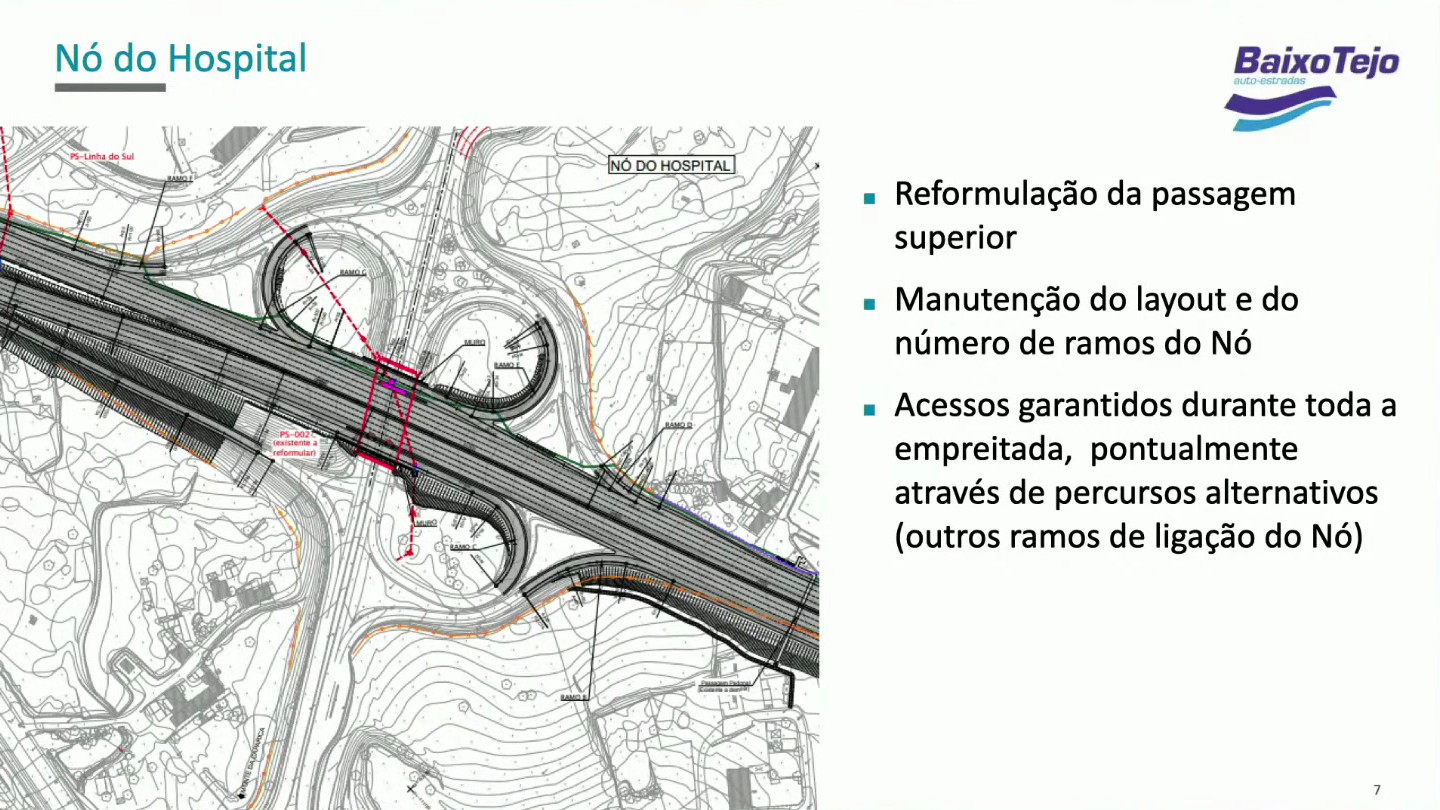

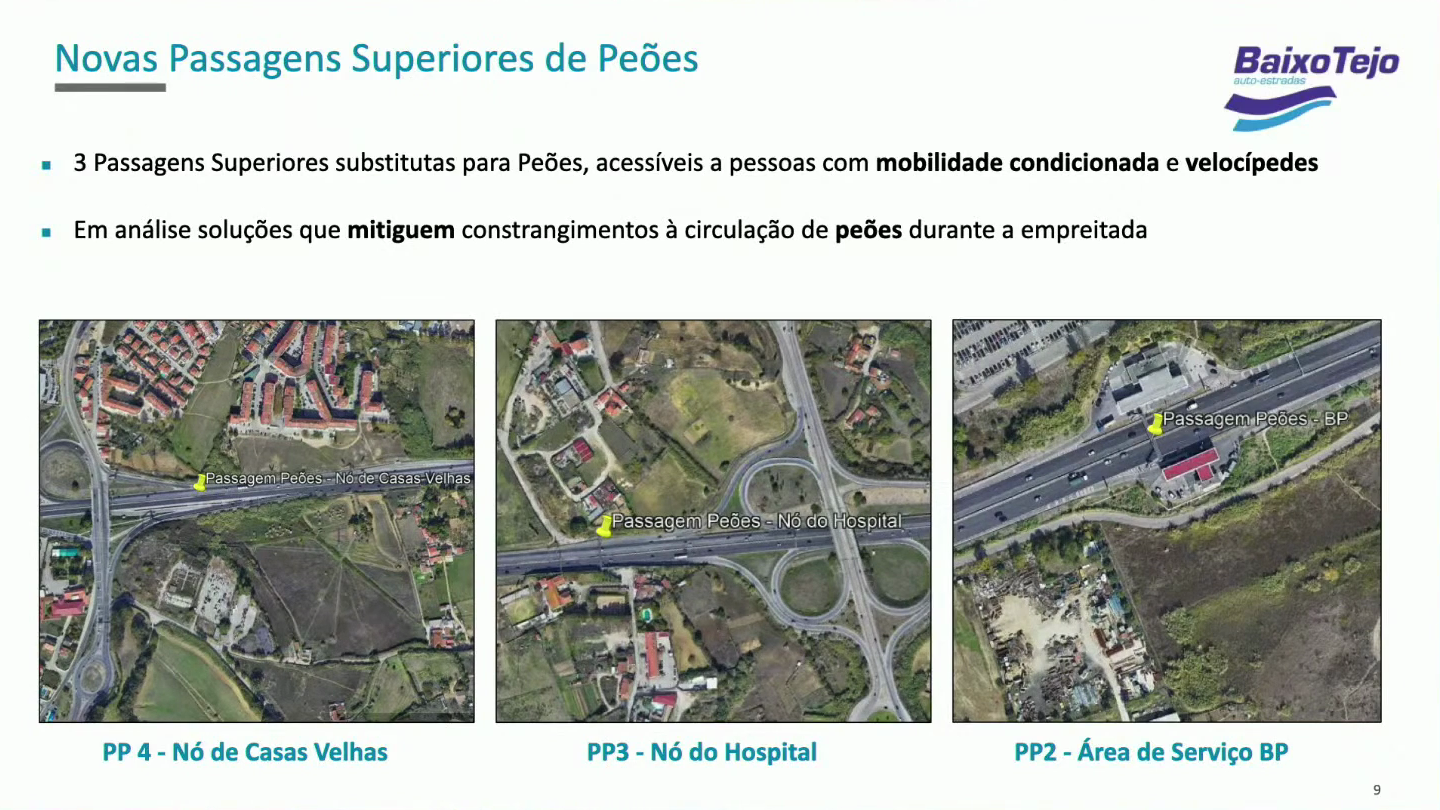
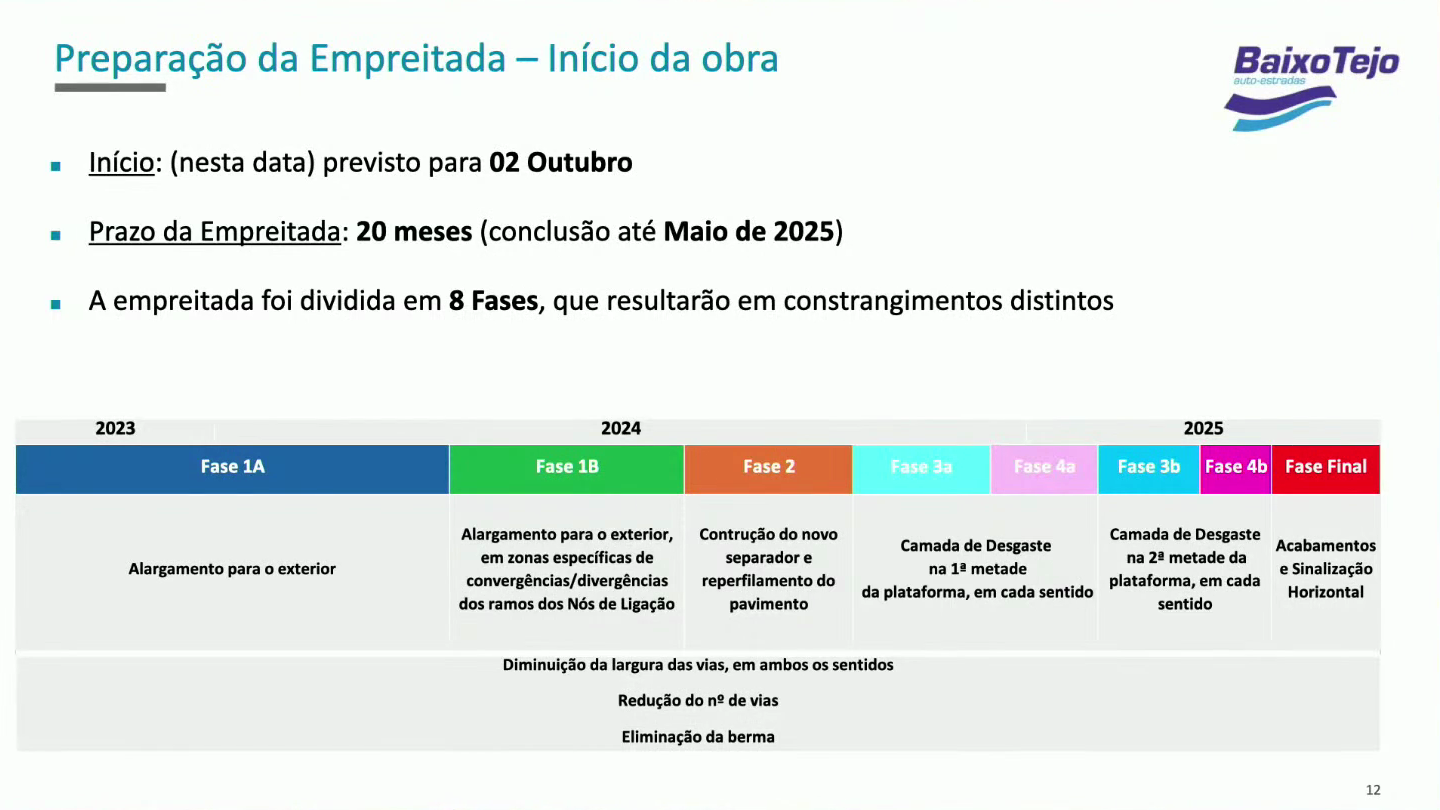
In addition to widening the IC20 lanes, there will be a intervention at the A2 junctionThere will be three lanes from the Centro Sul traffic circle towards Lisbon, and there will also be a new "arm" connecting the IC20 to the A2. "Our strict obligation under the contract is to increase the number of lanes"but "we thought it would be difficult to present ourselves to the Almada municipality with just this obligation"João Portela explained that, with IP, they were able to "finding savings in another project and bringing them to this project"This will finance the changes to the A2 junction. He pointed out that "the improvement of the South Center exit to the tollbooth is not yet closed"It will also have an impact on the Pragal Urban Park, a green infrastructure built in 2019 next to the access to Lisbon and which acts as an extension of Parque da Paz, Almada's large park.

The work on the IC20 will also affect the Casas Velhas junction, near the University (FCT), where there will now be two lanes connecting to the A33. The three pedestrian overpasses to be replacedThe new pedestrian bridges should also be cycleable and accessible to all, including wheelchair users. The existing bus stops on that stretch of the IC20 will also be relocated away from it; they will be placed either at the exits or further into the urban areas. "The location of those stops is not suitable"taking into account the expressway characteristics of the IC20, and "we take this opportunity to make amends"said João Portela.
Overall, the work will be carried out by the contractor Alberto Couto Alves, S.A., selected by public tender, will cost close to 20.5 million euros.
What does the contract say?
The road PPP contracts are available here. They are drawn up between Infraestruturas de Portugal (IP), the state-owned company responsible for the road infrastructure, and the various sub-concessionaires. As mentioned, in the case of the IC20, the contract is signed between IP and Auto-Estradas do Baixo Tejo (AEBT), and there have been two versions since the start of the sub-concession: the original contract is from 2009, and 10 years later it was updated/renegotiated, with a new document in force since 2019.
In either of these two versions, there is a clear point about the increase in lanes: "the increase in the number of lanes of the Motorway sections will be carried out, unless otherwise instructed by the Grantor: (...) in the Sub-sections with six lanes, the construction of one more lane in each direction must be started in the year following that in which the ADT [Average Daily Annual Traffic] reaches 60,000 (sixty thousand) vehicles.". However, the grantor - which is IP - can decide not to increase the number of lanes. There is another exception: if the new bridge over the Tagus or the new Lisbon airport is built, the TMDA count and the obligation to increase the number of lanes are suspended, given that "the potential impact, in terms of traffic demand, resulting from the implementation of the aforementioned infrastructures".
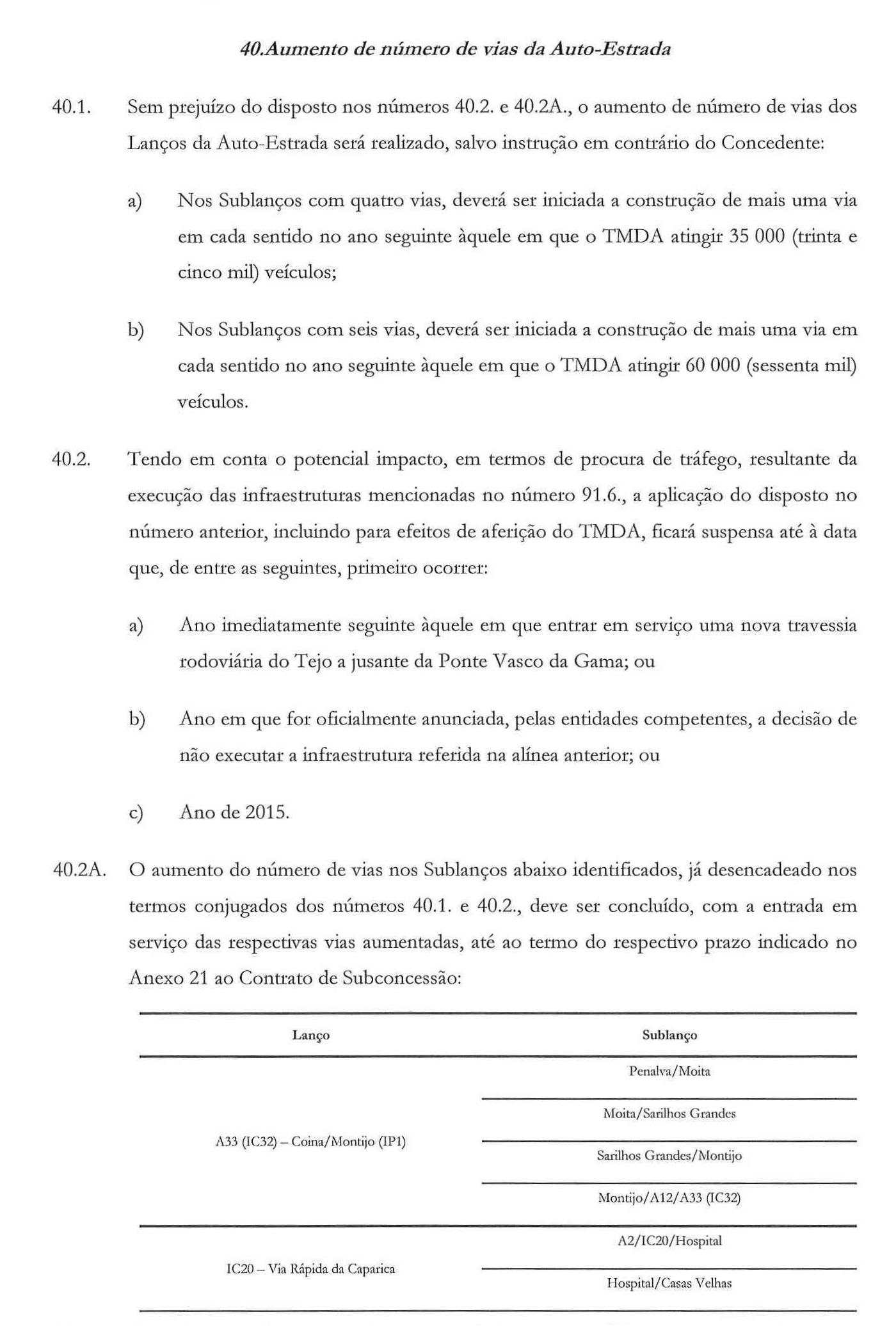
In fact, "in the event that the Portuguese State awards a tender for the installation on the south bank of the Tagus River of the airport infrastructure commonly known as the New Lisbon Airport or in the event that the Portuguese State decides to award a tender for the construction of a new road crossing of the Tagus River downstream of the Vasco da Gama Bridge or if, by any other legal means, the design and construction of any of the aforementioned infrastructures is initiated, this Contract may be terminated by the Grantor, in which case the provisions of paragraph 84.10 shall apply.". In other words, to tear up the contract, IP would have to compensate Baixo Tejo.
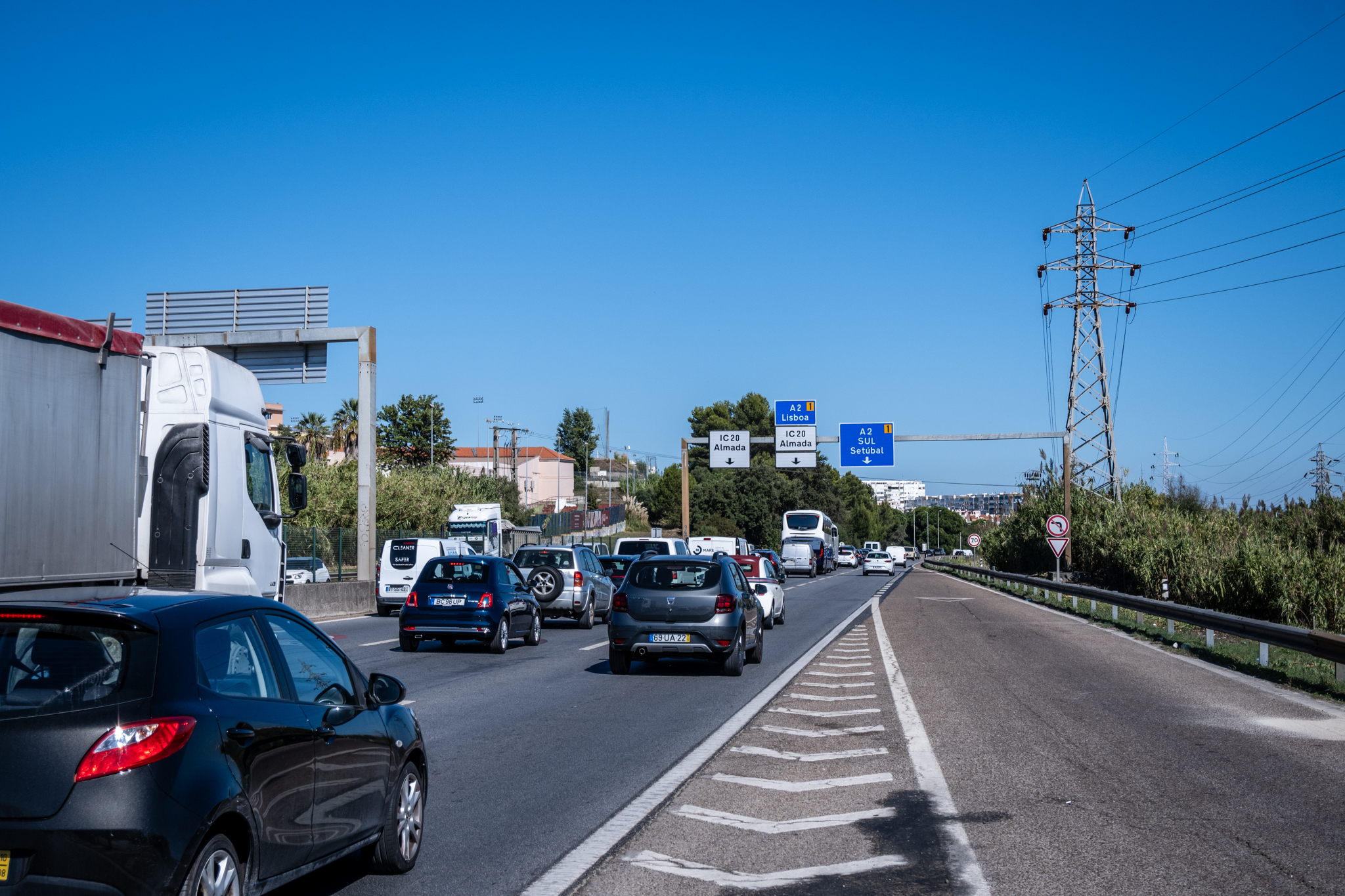
However, the contract renewed in 2018/19 added a caveat about the IC20 in particular: "the increase in the number of lanes in the Sub-sections identified below, already triggered under the combined terms of paragraphs 40.1. and 40.2., must be completed, with the entry into service of the respective increased lanes, by the end of the respective period indicated in Annex 21 to the Sub-concession Contract". And that deadline is August 1, 2024. This means that the IC20 between Almada and the Casas Velhas junction has to be widened, period. And the work will be finished by May 2025, a year late.
📁 Documents
What does the Almada City Council think?
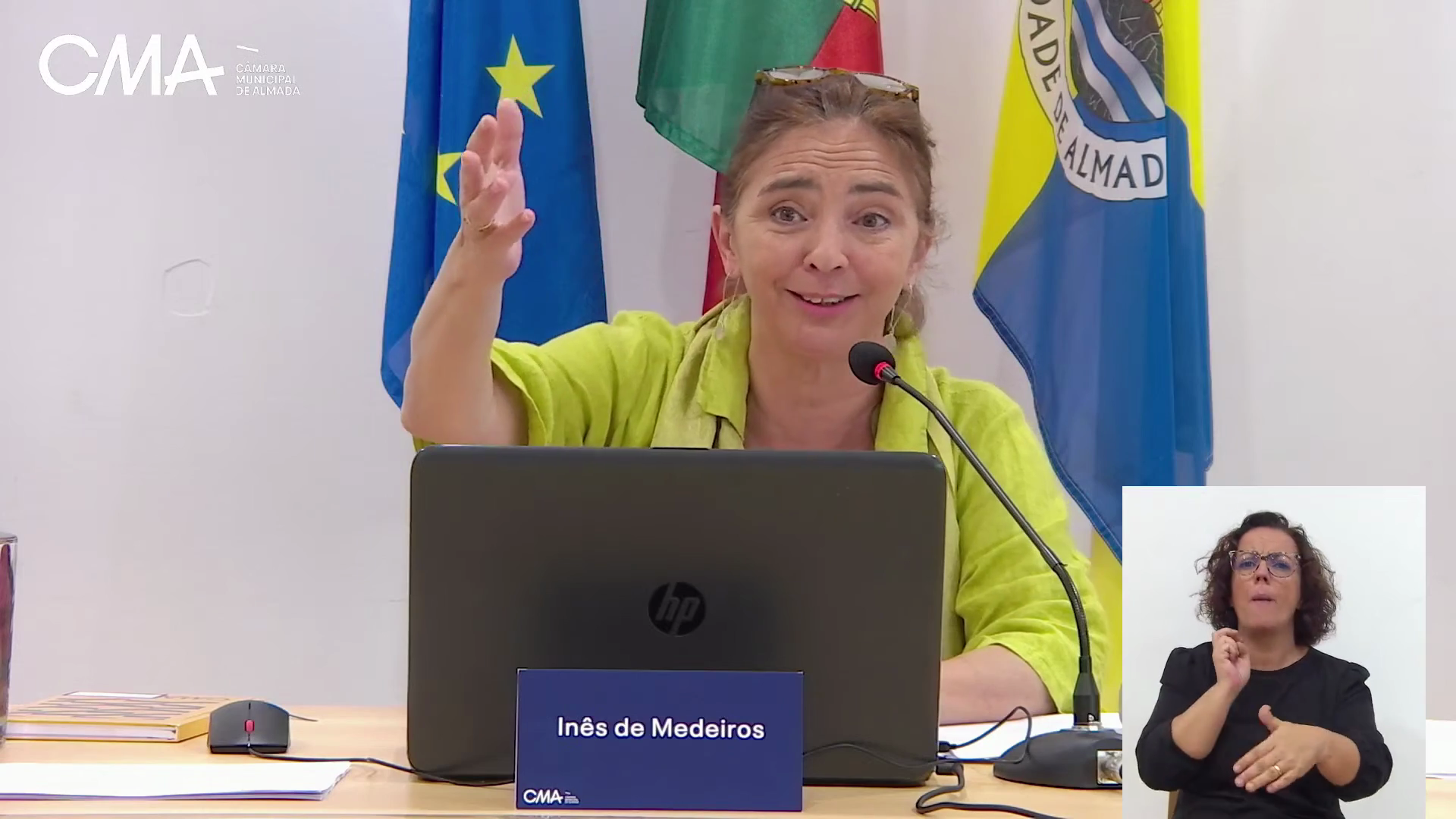
At the meeting, Inês de Medeiros, Mayor of Almada, didn't say much about the work to widen the IC20, but she did point out that "does not compensate for the need for a third or fourth (I don't want to prioritize) crossing between the south and north banks". Medeiros has advocated a bridge between Trafaria and Algés, connecting there to the CRIL, as a way of relieving congestion on the 25 de Abril. "The bridge won't get any bigger"he said. "None of this [traffic] will be solved if there isn't a new crossing that allows traffic to move between the two banks without going through the heart of Almada and the center of Lisbon." In other words, according to the Mayor of Almada, the new crossing between Trafaria and Algés would take pressure off the Centro Sul traffic circle and the entire Cova da Piedade area. But "it's important that national organizations realize this importance"he underlined.
Inês de Medeiros clarified that the IC20 has "strange status"because, "despite being in the heart of a developing urban area, it still has the status of an IC, in many cases having the characteristics of an urban road"and stressed the Chamber's willingness to "humanize" the IC20 and to bring it under its management. "There are too many people in charge in Almada. It's always good to have several heads thinking, but it's terrible to have too many people in charge of the same territory"he said, referring to the division of land management and planning in municipalities such as Almada between the municipality, the government and other public companies, such as IP.
For the Mayor of Almada, there is one positive part of the work, the resolution of the A2 junction, where there will now be a direct connection "of those coming from the coast to get onto the bridge" ("those 100 meters are a black spot" because the IC20 had been "made to be much smaller than it is now") and where the Almada exit (from the Centro Sul traffic circle) to the 25 de Abril Bridge will also be widened. The resolution of this junction was a long-standing demand of Almada and its completion now, together with the contractual widening of the IC20, will help to make this work more acceptable to the municipality.

In practice, the contract between IP and Baixo Tejo transcends the Almada City Council, which has very little say in the management of this infrastructure. Any opinion it issues on the work is not binding and, even if it takes a stance against it, it would be difficult for that position to have any practical consequences. With no jurisdiction over the IC20, the municipality is responsible for the area around this road, where, according to Inês de Medeiros, a green corridor is still planned to link Parque da Paz, in Almada, to the Costa da Caparica seafront, with a cycle path offering mobility between the two cities and Pragal. The municipality has also tried to improve aspects of the IC20 widening project, namely the issue of pedestrian crossings, making them accessible to cyclists as well. At least at the Casas Velhas junction, they are trying to build a pedestrian bridge that would "it could be a section of the cycle network to connect the University to the old houses"said Medeiros.
At the same meeting, PSD councillor Nuno Matias lamented nothing is being done on the so-called A2 toll plaza, criticizing the "the way it is organized" by provoking "bottlenecks on the sides". "I know you're not from Baixo Tejo, but it would be useful to rethink the whole thing and organize it differently." The Mayor of Almada acknowledged the problem: "The reorganization of the cellar was the minimum." For her part, Left Bloc councillor Joana Mortágua added that "We can keep increasing the number of expressways, but if we can't get cars off the road, the traffic problem won't be solved. And the only way to do that is with public transport. The extension of the Metro is absolutely strategic in defining mobility between Almada and various centralities on the south and north banks". In response, Inês de Medeiros also stressed the importance of bringing the MTS to the Coast and that this investment is provided for in the National Investment Program 2030 (PNI 2030)as we'll see below.
1900 signatures against
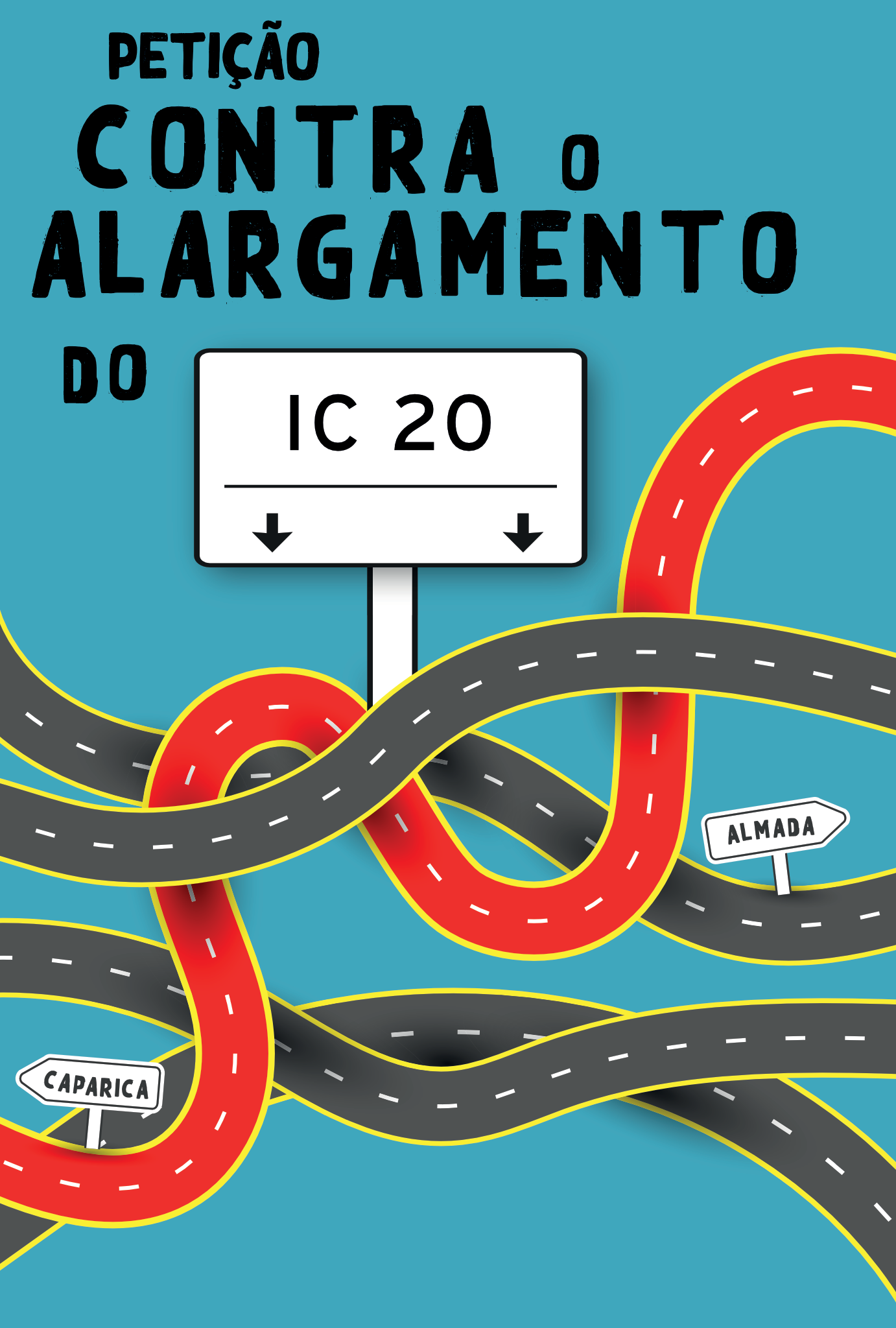
The recent announcement of the widening of the IC20 road in Almada, triggered the creation of the petition against the widening of the IC20. In a statement, the petitioners say that "the people of Almada were surprised" with this work, which is the result of "a lapsed contract, which should have already been renegotiated by the state with the Baixo Tejo sub-concessionaire, in order to meet the environmental objectives".
Launched symbolically on September 22, European Car Free Day, the petition already has around 1900 signatories. The petition has also been signed by the following associations Almada Archaeology Center, Living Road, FPCUB - Portuguese Federation of Cycle Tourism and Bicycle Users, GEOTA - Spatial Planning and Environment Study Group, MUBi - Association for Urban Mobility by Bicycle, Women in Architecture e The Future Design of Streetsand also by the Setúbal regional branch of the Quercus and by the local collective Estuary.
The petitioners say they are "disgusted with the situation, with its short notice period and without any consultation with the population" and argue that "IP instructs the Baixo Tejo sub-concessionaire that there is no need to increase the number of lanes". "It should be emphasized that the financial investment in this work by the sub-concessionaire is indirectly public money, because if the state renegotiates the contract with the concessionaire it will be able to recover the money that is in danger of being wasted on a work that is perfectly useless and against the government's own environmental objectives. By releasing the sub-concessionaire from this useless and expiring obligation, it is perfectly legitimate for the government to recover at least part of this money. In economics, these are called 'opportunity costs', i.e. costs estimated on the basis of what could be gained from the best alternative use of that money."they write.
And they add:
"The reasons for this opposition to road widening are that the work goes against the national climate strategy, does not solve the problem of congestion (creating the so-called 'induced traffic' and 'bottleneck' effects) and promotes urban dispersion in Almadense territory. Alternatively, priority measures are suggested in terms of financial investment, which should be implemented in the territory, namely by increasing the number of BUS lanes, improving the frequency, quality and extent of public transport and creating more and better infrastructures for soft mobility. It is also important to implement measures such as the creation of new elevated cycle-pedestrian crossings that reduce the negative geographical barrier impact of this type of road, and the adaptation of existing viaducts to include safe pedestrian and cycle paths."
The authors of the petition want to reach at least 2,500 signatures so that the issue can be discussed in Parliament.

"A 30-year setback"
Induced traffic - concept referred to by the petitioners - is a well-established scientific fact: it means that increasing the number of lanes on a major road will lead to greater demand and will not solve congestion; in other words, it means more cars on the road because capacity has increased.
It's easy to think that adding more lanes would mean less traffic, and the truth is that they may relieve congestion temporarily, but the added space will invite (induce) more car journeys, either by people who didn't use that road, or by people who eventually used other modes of transport. And soon that widened axis will be congested again. It's a catch-22 because the temptation is once again to increase the capacity of the infrastructure, which will only lead to more journeys and more dependence on the car.
For Fernando Nunes da Silva, full professor in Civil Engineering, responsible for the Planning, Urbanism and Environment disciplinary area at the Instituto Superior Técnico (IST), the widening of the IC20 is "To go back to the late 1980s, early 1990s, to the so-called road revolution in Portugal. It's a 30-year step backwards. From a cultural, environmental and transport policy point of view, it's an unspeakable and unjustifiable step backwards". Even so, the fact that the work is only four kilometers long "It's always a bit better than the IC20, but there's no point in doing this".
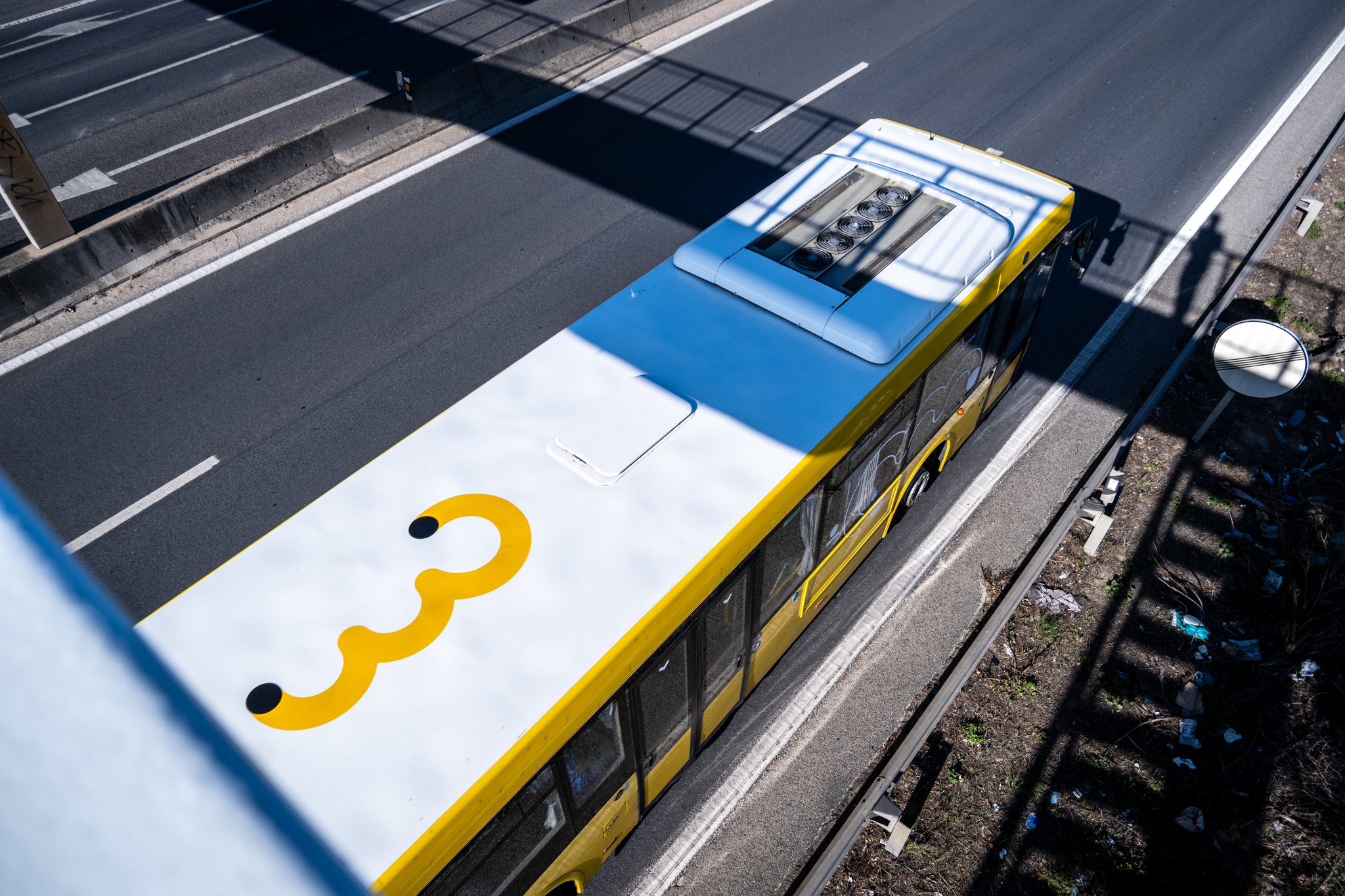
To the expert, "it's also a waste of money because it doesn't solve the traffic problems". Nunes da Silva only accepts part of the contract: the correction of the A2 junction, near the Centro Sul traffic circle. "The problem with the IC20 is not one of capacity, it has to do with the accesses to the 25 de Abril Bridge, which have not been resolved." The widening contracted between IP and Baixo Tejo will resolve this situation, which was not an obligation of the sub-concessionaire and which, according to the latter, was an addition to the work. "The problem has to do with getting from the IC20 to Lisbon without conflicting with those leaving the A2 to enter Almada and those coming from Almada. It's a problem that was studied by Gabriel Oliveira several years ago and has never been done. Another problem is the entrance to the A2 from Almada, which has to be disconnected from the Centro Sul junction. That permanent congestion at the entrances and exits to Almada at peak times must be unblocked once and for all.“
"It makes perfect sense to free up access to the bridge for the interior distribution in the South Center, but that doesn't require widening the IC20 to add one more lane per carriageway"he summarizes. And he reinforces his point: the widening of the IC20 is "absolutely contrary to what was the government's own policy from the point of view of sustainable mobility and the decarbonization of mobility". "Portugal is probably the only developed European country that continues to invest in strengthening road infrastructure to solve problems of accessibility and urban mobility. Nobody does this anymore. Everyone is looking for alternatives to individual road transport, leaving to it what can't be solved any other way."
"We have a justice system captured by certain types of interests and lobbies, and it doesn't do what it should do, which is to defend the public interest and constitutional guarantees"Nunes da Silva laments. "The concessions and contracts that have been made with private entities are absolutely ruinous for the state and the public interest," he assures us, "regardless of traffic, fixed revenues for 30 years to these private companies; they were risk-free deals for the investor". "Now to resurrect this 30 years later, when all the policy is in the opposite direction... At least the policy that is announced and proclaimed to the four winds in relation to climate change"he insists.

Fernando Nunes da Silva has no doubt that "If the government were of a different political persuasion, the City Council would already be screaming its head off protesting against this retreat from sustainability and decarbonization policies. But as Almada Town Hall and the government are currently at loggerheads, the council is keeping quiet in the face of this kind of nonsense, spending millions on something that is completely unnecessary.". Having worked on the PDM (Municipal Master Plan) for Almada, Nunes da Silva knows the municipality south of the Tagus well and also points out that the widening of the IC20 "it's an extremely negative alternative" in relation to the planned green, cycle and pedestrian corridor. "The PDM that was being revised proposed taking up Gonçalo Ribeiro Telles' idea - when he worked under the previous regime for the Housing Development Fund and the Almada Integrated Plan - of creating a large green corridor between Parque da Paz, in Almada, and the Costa da Caparica."he explained, detailing that it was an idea that he was still working on. "perfectly feasible because that area has some agricultural use and the few building interventions are occasional or not completely on top of the IC20".
And it's green infrastructure "absolutely essential to avoid flooding in the area of Cacilhas and also Cova da Piedade, but especially in the case of Cova da Piedade". For the professor, it would make much more sense to use the PRR - Recovery and Resilience Plan - to finance this project instead of spending 20.5 million on widening a highway. Or to take the MTS, the light rail south of the Tagus, to Costa da Caparica.
What about the MTS?

For almost 30 years, the people of Almada and the south bank of the Tagus have been waiting for the expansion of the MTS. Since it was inaugurated in 2008, the MTS has never been extended, maintaining the original three lines, 19 stations and 13.5 km; with a Y-shaped layout, its main points are Cacilhas, Pragal, the University (FCT) and Corroios, in the municipality of Seixal.
However, since the first MTS plans were drawn up in the 1990sThis is the first time that the light rail service has been extended to Moita, passing through Barreiro, and also to Costa da Caparica and Trafaria. Wills that were recovered in a new route study presented in early 2021. The aim of this work was to study the expansion of the MTS beyond Moita, namely Montijo and Alcochete, and into lower-density areas, proposing a mixed system between LRT (the current system) and BRT (aka "metrobus").
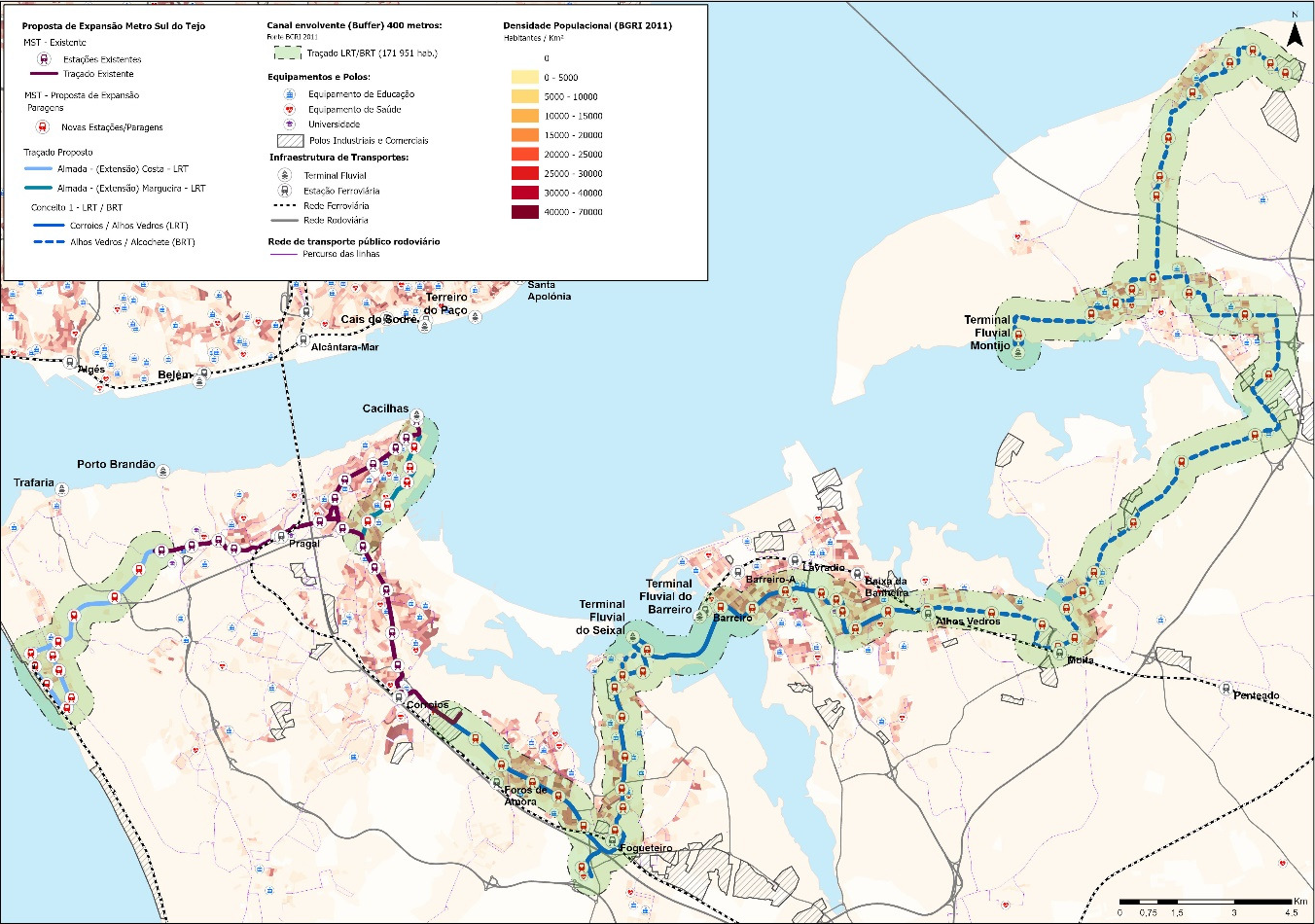
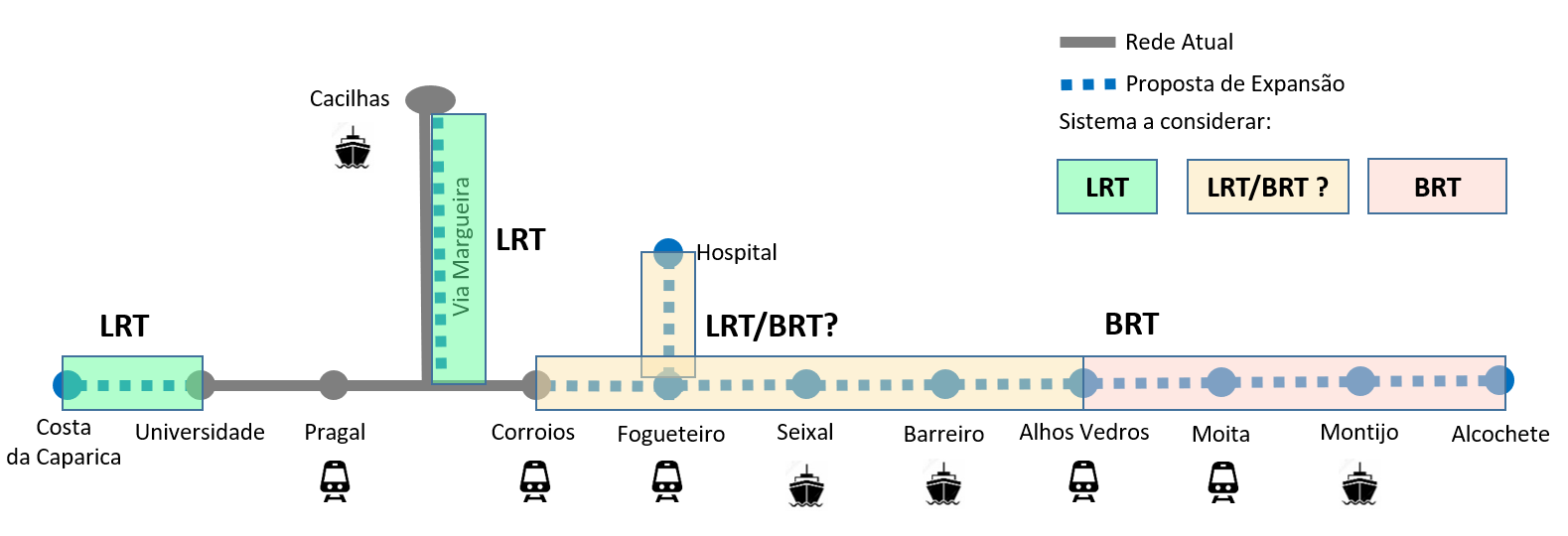
📁 Documents
The expansion of the MTS to Costa da Caparica has been planned since at least 1995. And the report presented in 2021 reaffirms it. The idea, in the light of the most recent study, is to extend the current Line 3, which ends at the University (FCT), on double track towards the Costa da Caparica, following the EN 377-1 on the south side, turning southwest before Quinta da Armadora (Pêra de Cima) and crossing a more rural area up to the viaduct of the A33 link to Trafaria, located near the town of Pêra.
The studied route then heads west, approaching the IC20, and developing along the north side of this road until it enters the town of Costa de Caparica. Within the city, the MTS would become a single track, crossing Av. 1º de Maio, Av. General Humberto Delgado, Rua Parque de Campismo de Almada, Estrada Florestal, Av. D. Sebastião and Av. Dr. Aresta Branco, always segregated from other means of transport. The most optimistic scenario envisages three circulations per hour and 600 passengers per hour per direction. Expansion would be by LRT, i.e. with the same type of vehicles that already run the service between Almada and Seixal.
The people of Almada, and especially the people of Costa da Caparica, have been demanding the expansion of the MTS for a long time, and they don't understand why this investment is apparently not a priority over the widening of the IC20. It is true that the arrival of the MTS on the coast is contemplated in the National Investment Plan 2030 to eventually be financed through EU funds in the "next cake", called Portugal 2030; but, for the time being, there are still no concrete dates or figures. And while we wait, Almada is going to have two more traffic lanes per direction on a major road axis, inviting even more car use, going against environmental and modal shift goals. Will the government and IP, which it oversees, have time to back down?

To Paulo José Silva, creator of the Facebook group Public Transport in Costa da CaparicaThe extension of the MTS to the coast should be a priority and, "As well as the Costa, it should also reach Charneca da Caparica, which is Almada's densest parish and the one that has grown the most". "There's a lot of talk about climate change and decarbonization, and we want to add more cars instead of reducing them, and to have more and better public transport"he laments. Paulo, a former bank employee, has used public transport for more than 35 years of his working life. Because he lives more locally, on the Costa, where he lives, he has been a less frequent user, but having a discussion group on Facebook and taking part in debates and forums in person, is "a question of citizenship". "I want to help others, to contribute my experience of using it and what I've felt on my skin for many years."
You have no doubt that "The fact that they're adding another lane won't solve anything. It will only increase the flow, which will block the entrance to the bridge. No matter how much you change the IC20 and the rest, the bridge will remain the same size". E "even if they're electric cars, they'll still clog up the bridge"he points out. Paulo believes that this issue of widening the IC20 doesn't just affect Almada - it also affects the city. "Lisbon probably doesn't want any more cars either, does it?". In addition to the MTS, it suggests improvements to the railroad and river transport, lamenting both the Cacilhas and Trafaria crossings. "We used to have boats every half hour in Trafaria, now it's every hour and they often fail." He also calls for fast bus connections between Costa and Trafaria, and between Costa and the nearest MTS station - FCT - until the light rail system is expanded. "We have no fast connection between Costa and the MTS. There should be a shuttle." These would be ways of relieving the IC20.
Paulo José Silva doesn't hold out much hope for any changes to the plans to widen the IC20, not least because the work is about to begin. That's why he's asking for the additional lane per direction to be a BUS lane. "It's the least we can ask for here."

